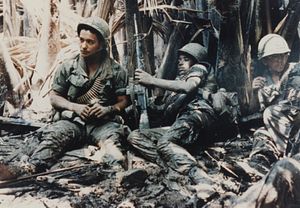This year, we commemorate the 40th anniversary of the end of Vietnam War, a two-decade conflict that pitted a poor and divided Asian nation against the rich and powerful United States. Understandably, it was a politically significant moment in world history.
But there were other equally memorable events that took place in Southeast Asia in 1975. Aside from the end of war in Vietnam, elsewhere in the region, the year also marked the start of the Indonesian invasion of East Timor, the rise of the Khmer Rouge in Cambodia, and the escalation of Muslim rebellion in the southern parts of Thailand and the Philippines.
When the army from the communist North Vietnam arrived in Saigon on April 30, 1975, the war had already been raging on for two decades. The war killed at least three million Vietnamese and more than 50,000 Americans. While Vietnam may have ‘won’ the war, it was a devastated country in 1975. Its rural and urban centers were in ruins and its economy was devastated.
If Vietnam succeeded in expelling American troops, it failed to remove the bombs left behind by the invading army. Over the past 40 years, more than 100,000 Vietnamese have been killed or injured by these bombs and land mines. Another grim legacy of the war is the poisonous impact of Agent Orange, which the Americans used against the Vietnamese Army. The chemical warfare not only destroyed Vietnam’s agriculture but also affected residents who were exposed to it. About three million people, including 150,000 children, suffered from defects caused by Agent Orange.
Though the Americans may have left in 1975, for millions of Vietnamese their suffering did not end that year.
Another country which was ravaged by the war was Vietnam’s neighbor, Laos. Between 1964 and 1973, the United States dropped more than two million tons of bombs on Laos to cut off the supplies of communist guerrillas operating along the borders of Vietnam and Laos. Because of this, Laos became the most heavily bombed country on Earth. At least 30 percent of these bombs failed to detonate. Forty years after the end of Vietnam War, these unexploded bombs continue to kill and injure farmers and other rural residents of Laos.
Another country which saw a communist party take power in 1975 was Cambodia. The communist Khmer Rouge ruled Cambodia from April 1975 to January 1979. During this brief period, the Khmer Rouge under the leadership of Pol Pot was accused of killing more than one million people. Some claim the casualties reached two million, or about a quarter of Cambodia’s population at that time. Those who resisted the government were sent to labor camps. Almost 800,000 suffered from torture, slave labor, and starvation.
Like Vietnam, East Timor ended colonial occupation in 1975 when the Portuguese government left the country and a Democratic Republic of East Timor was proclaimed. But it was a short-lived independence because East Timor’s neighbor, Indonesia, sent troops in December to occupy the country. More than 200,000 East Timorese, or about one-third of the local population, died during the invasion. Indonesia argued that it had only responded to the appeal of some East Timor leaders for military assistance. But many scholars believe Indonesia’s invasion was tacitly approved by the United States and Australia to prevent communists from taking control of East Timor. Indonesia occupied East Timor from 1975 to 1999.
The year 1975 also saw the rise of tension in the Muslim-dominated areas of Thailand and the Philippines.
In southern Thailand, the army was accused of killing several young Muslims, which worsened the political situation in that part of the country.
Meanwhile, intense clashes between government soldiers and Muslim rebels in the southern Philippines displaced thousands of residents. The conflict generated greater international attention to the demand of Muslims in the Philippines for independence or autonomy.
So while the end of Vietnam War in 1975 shaped the modern history of Indochina, other events during the same year also clearly had a profound impact in the Southeast Asian region, such as the Timor occupation by Indonesia, the ‘killing fields’ in Cambodia courtesy of the Khmer Rouge, and the Muslim insurgencies in Thailand and the Philippines.
Many things have changed after 1975: Vietnam and the United States have reestablished diplomatic and military ties. East Timor became an independent republic in 2002. And some of Pol Pot’s subordinates are on trial today for committing grave crimes against humanity.
But many things have also remained the same. Muslim separatist movements in both the southern parts of Thailand and the Philippines continue to linger. And for millions of Vietnamese and Laotians, the war that ended in 1975 is still a reality today; many of them continue to get hurt or killed because their lands are still littered with deadly bombs.
The year 1975, therefore, is crucial not just to remembering the past but also to understanding the present.

































